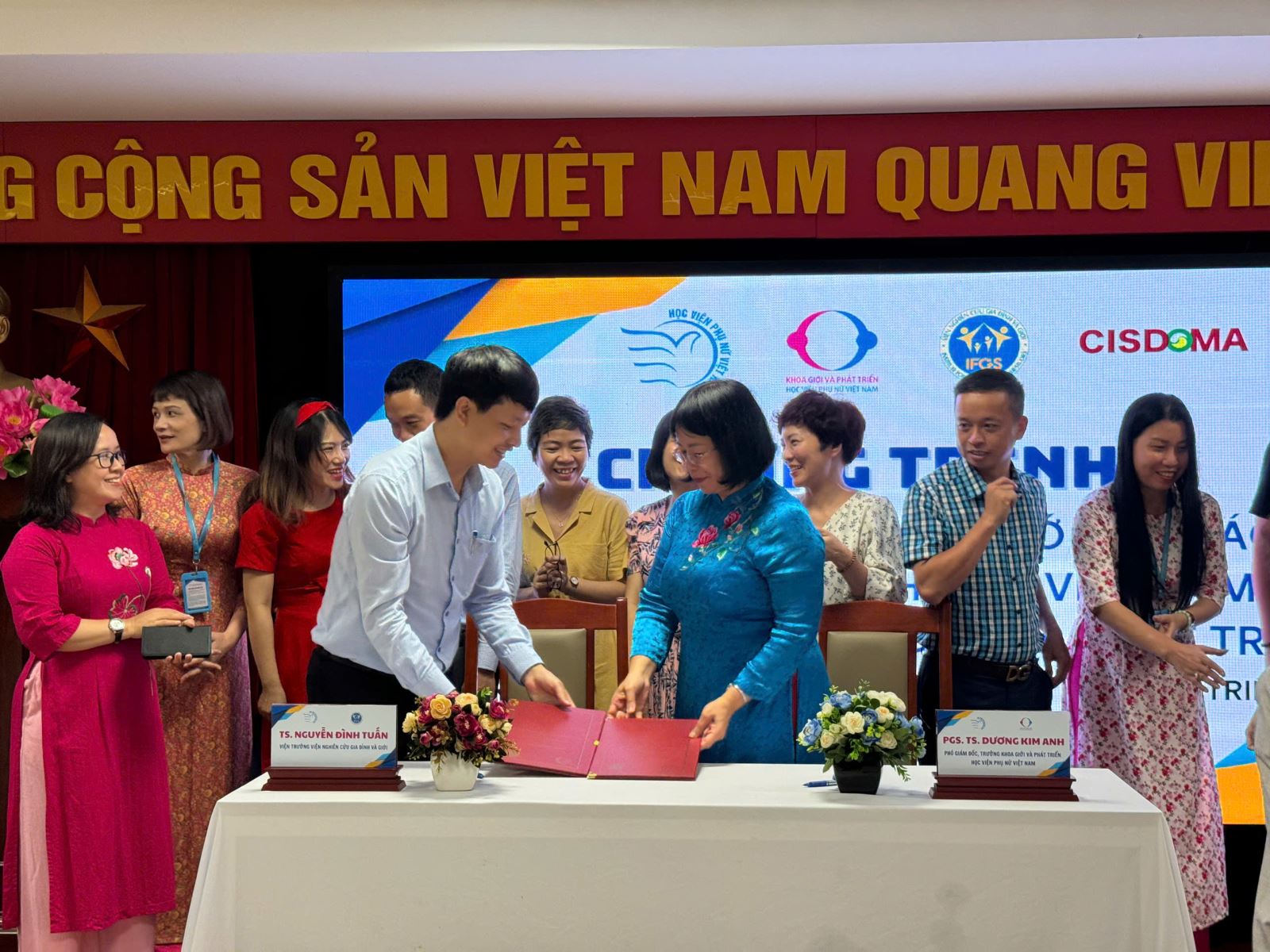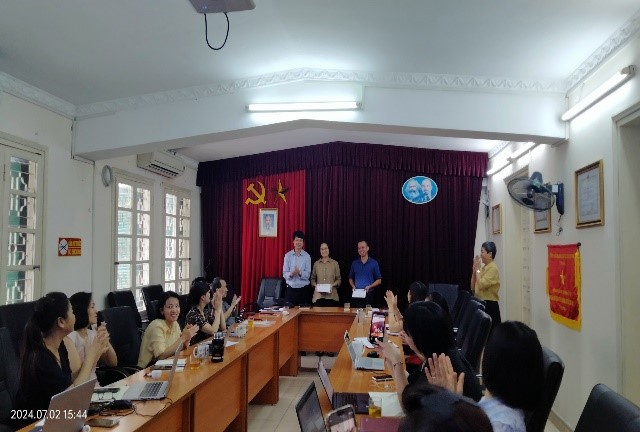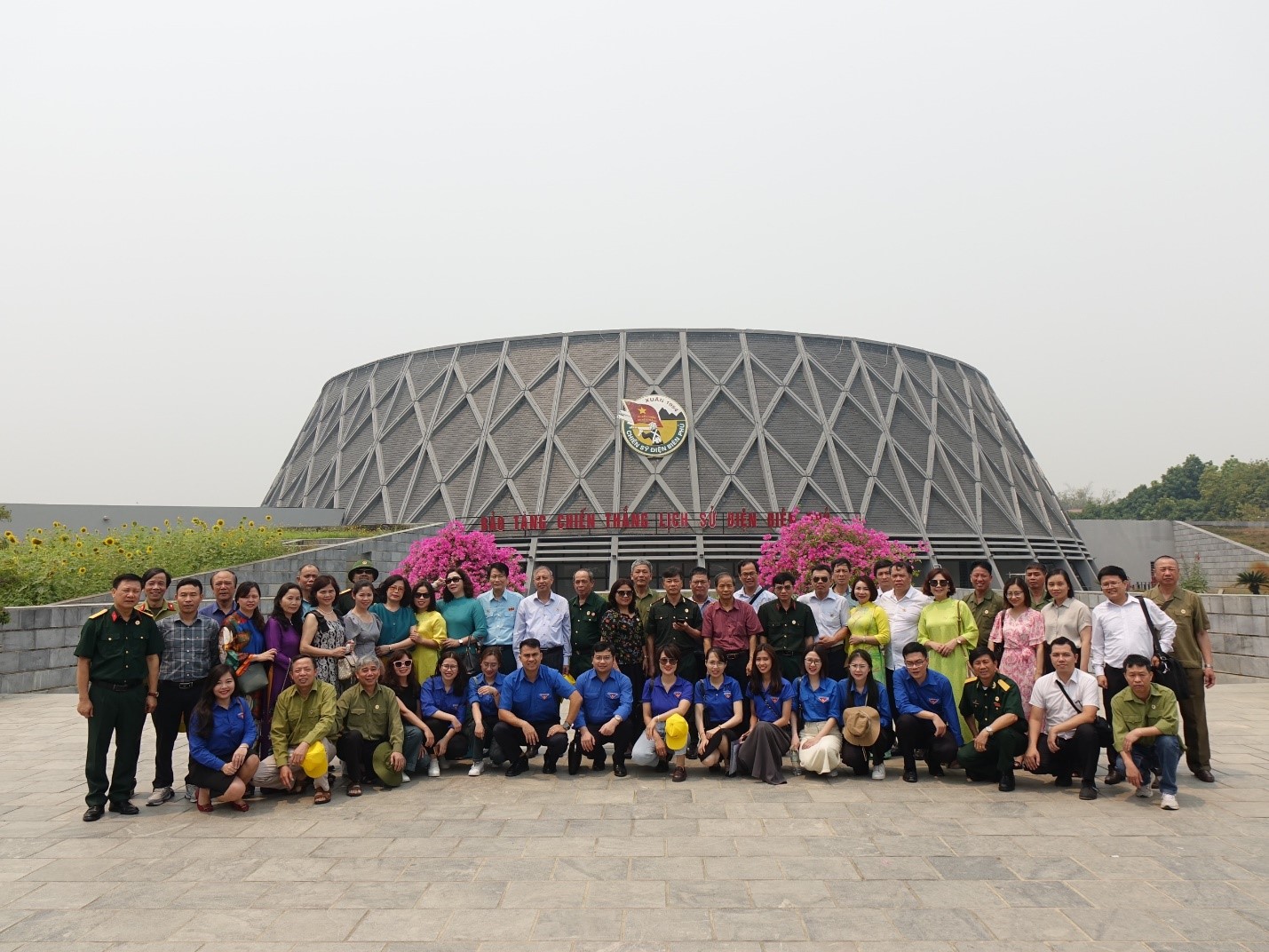Điểm nhấn
-
 Hội thảo “Thực trạng người Việt Nam hồi hương từ Vương quốc Anh giai đoạn 2014 - 2023”
Hội thảo “Thực trạng người Việt Nam hồi hương từ Vương quốc Anh giai đoạn 2014 - 2023”
-
 Lễ Ký kết biên bản ghi nhớ hợp tác giữa Học viện Phụ nữ Việt Nam với Viện Nghiên cứu Gia đình và Giới
Lễ Ký kết biên bản ghi nhớ hợp tác giữa Học viện Phụ nữ Việt Nam với Viện Nghiên cứu Gia đình và Giới
-
 Hội thảo khoa học: "Bộ chỉ số gia đình hạnh phúc: Một số vấn đề lý luận và thực tiễn"
Hội thảo khoa học: "Bộ chỉ số gia đình hạnh phúc: Một số vấn đề lý luận và thực tiễn"
-
 Tọa đàm khoa học "Vận dụng lý thuyết trong nghiên cứu khoa học xã hội"
Tọa đàm khoa học "Vận dụng lý thuyết trong nghiên cứu khoa học xã hội"
-
 Hội nghị Đối thoại giữa Chi ủy, Lãnh đạo viện với đảng viên, viên chức và người lao động Viện nghiên cứu Gia đình và Giới 6 tháng đầu năm 2024
Hội nghị Đối thoại giữa Chi ủy, Lãnh đạo viện với đảng viên, viên chức và người lao động Viện nghiên cứu Gia đình và Giới 6 tháng đầu năm 2024
-
 Chi bộ Viện nghiên cứu Gia đình và Giới tổ chức sinh hoạt chuyên đề: Đoàn kết thống nhất trong Đảng theo tư tưởng Hồ Chí Minh
Chi bộ Viện nghiên cứu Gia đình và Giới tổ chức sinh hoạt chuyên đề: Đoàn kết thống nhất trong Đảng theo tư tưởng Hồ Chí Minh
-
 Cuộc thi “Nét đẹp và giá trị gia đình Việt Nam” hưởng ứng Ngày Gia đình Việt Nam 2024
Cuộc thi “Nét đẹp và giá trị gia đình Việt Nam” hưởng ứng Ngày Gia đình Việt Nam 2024
-
 Hội Cựu chiến binh, Đoàn Thanh niên Viện Hàn lâm Khoa học xã hội Việt Nam đi thăm lại chiến trường xưa Điện Biên Phủ
Hội Cựu chiến binh, Đoàn Thanh niên Viện Hàn lâm Khoa học xã hội Việt Nam đi thăm lại chiến trường xưa Điện Biên Phủ
- Tổng mục lục Tạp chí 2023
-
 Viện nghiên cứu Gia đình và Giới phát động phong trào thi đua và ký Giao ước thi đua năm 2024
Viện nghiên cứu Gia đình và Giới phát động phong trào thi đua và ký Giao ước thi đua năm 2024
Liên kết web
Số lượt truy cập
18
4459010
Chi tiết tạp chíNo. 1 - 2011
Women’s Leadership in Vietnam’s Public Sector
Abstract: Using existing data published by public agencies, especially websites of government organizations and agencies, and data from the Agriculture, Forestry and Fishery Census 2006, this paper presents analysis of women’s leadership in Vietnam’s public sector. The analysis in this paper shows the fact that women are far less represented among all kinds of leadership in all public sectors. Participation of women is not even across sectors and areas of social life. They tend to have more participation in areas such as cultural, education, and health care, and they have less participation in construction, transportation, and areas of technological nature, and they have no/little representation in defense and security leadership. Where they have more participation, women often do not keep highest positions. The low female leadership is widespread in all provinces and geographical regions. Scatter evidence from the Agricultural, Forestry and Fishery Census 2006 suggests that to achieve the same position as men, women have to work harder and have to have higher education.
Keyword: Women; Women’s Leadership; Women in Public Sector.
Keyword: Women; Women’s Leadership; Women in Public Sector.
Schooling of Children and Adolescents in Rural Areas
Abstract: The article explores the impacts of individual and family factors on the schooling of children and adolescents in the rural areas of the four provinces: Yen Bai, Ha Nam, Thua Thien Hue and Tien Giang 2004-08. The research findings show that economic difficulty, poor studying performance and no willing to learn are the three main reasons for the dropout of children. Mothers' educational background plays a more important role than fathers' regarding the school enrollment of rural children and adolescents. Parents seem not to have gender discrimination attitudes or behaviors in term of children's education although girls' education is restrained since they have to participate in productive household work earlier and more often than boys. Children having many siblings will encounter more disadvantages in access to schools and schooling on right age, especially among rural areas in the context of economic transition.
Keywords: Children; Adolescents; Education.
The Use of Demographic Data in Vietnam
Abstract: Over the past two decades, various demographic surveys were carried out. General Statistics Office of Vietnam under supports of international organizations has collected several nationally representative data. Other Government and non-Government institutions have also collected various data. While those demographic data provide a good resource for policy making and planning, question of their use remained. This paper aims to gather major demographic data in Vietnam over the last two decades, assess their use, and raise recommendations for more effective use of this valuable resource. The results show that those demographic data were under-used: the number of studies using those data source is small and a large number of potential topics for analysis were ignored. Low awareness and accessibility to data, limited human capacity to exploit quantitative data, and lack of resources for in-depth analysis would have contributed to this low use of demographic data and they should be changed.
Keywords: Demographic Data Availability.
Abstract: This paper aims to examine trend and correlates of divorce in rural areas and to identify social and cultural factors influencing the divorce decision, using data of divorce profiles of one district court in 10 years (i.e. 2000-2009) and case studies of divorced persons at the same district. There is an interesting pattern of the person who initiated divorce that brings out alternative issues of gender equality. There are different variables which correlate to divorce such as age at marriage, marriage duration, number of children, living arrangements after marriage, type of marriage, place of residence, employment, birth cohort, sex of children and etc. In addition, case studies shed lights on alternative aspects in divorce which cannot be absolutely seen in regression analysis. There are also traditional factors involvements in divorce decision.
Key words: Divorce; Marriage; Red River Delta.

